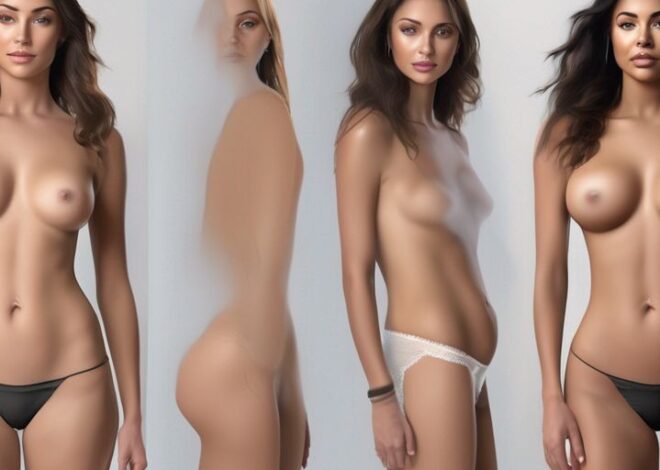
Exploring AI Undress Software: Technology and Controversies
AI undress software, a highly controversial and innovative technology, has rapidly evolved, presenting both remarkable capabilities and significant ethical concerns. This article delves into the technology behind AI-based undressing tools, explores the ethical debates they incite, and examines the legal landscape surrounding their use. A specific focus is given to Nudify.Online, a leading platform in this domain, to illustrate the real-world application and implications of such technologies.
Key Takeaways
- AI undress technology uses advanced image processing and machine learning models to digitally remove clothing from images of people.
- The development of such technologies has sparked significant privacy concerns and debates over the moral implications of their use.
- Legal frameworks are currently struggling to keep pace with the rapid development of AI undress technologies, leading to a patchwork of regulations.
- Platforms like Nudify.Online demonstrate the capabilities and potential misuse of AI undress technology, impacting public perception and online privacy.
- The future of AI undress technology is likely to see more sophisticated advancements, but also increased ethical scrutiny and potential regulatory interventions.
Overview of AI Undress Technology

Definition and Functionality
AI undress technology refers to software designed to digitally remove clothing from images of individuals, often using advanced machine learning and image processing techniques. At its core, this technology empowers users to interact with digital content in novel ways, providing a platform for various applications, from fashion to entertainment.
Historical Development
The development of AI undress technology has evolved significantly over the years. Initially rooted in basic image manipulation techniques, it has grown through the integration of more sophisticated AI models, reflecting broader advancements in the field of artificial intelligence.
Current Technologies in the Market
Several AI undress technologies are currently available in the market, each offering unique features and capabilities. For instance, Nudify.Online uses the most advanced clothes-removing AI technology as of 2024. Here’s a brief overview of some key players:
- Nudify.Online: Advanced web-application for clothes removal
- DeepNude: Pioneered early versions of undress AI
- ClotheMeNot: Focuses on real-time image processing
This technology, while innovative, raises significant ethical and privacy concerns.
Technical Mechanisms Behind AI Undress Software

Image Processing and Recognition
AI undress software relies heavily on sophisticated image processing techniques. These systems analyze the input image, detect human figures, and differentiate between clothing and skin. Advanced algorithms are employed to handle variations in lighting, pose, and clothing types, ensuring the output remains consistent and realistic.
Machine Learning Models Used
The core of AI undress technology is powered by machine learning models, particularly deep learning networks. These models are trained on vast datasets of clothed and unclothed images to learn the subtle cues that indicate what lies beneath clothing. The accuracy of these models is crucial for the performance of the software.
Algorithmic Challenges and Solutions
Developing AI undress software involves numerous algorithmic challenges, such as handling diverse body shapes, complex clothing patterns, and maintaining privacy and security. Solutions often involve iterative testing and enhancements, with a focus on improving the robustness and reliability of the algorithms.
Ethical Considerations and Controversies

Privacy Concerns
The use of AI undress technology raises significant privacy concerns. Individuals may not be aware that their images could be manipulated in such a manner, leading to potential misuse and exploitation. This technology can easily be used to create non-consensual imagery, which poses a serious threat to personal privacy.
Legal Implications
Various legal challenges surround AI undress software. Laws regarding digital consent and image manipulation vary widely across jurisdictions, making it difficult to enforce protections universally. Key legal questions focus on the ownership of digital images and the legality of their alteration without explicit consent.
Moral and Social Impact
The deployment of AI undress technology has profound moral and social implications. It can degrade social norms and values, especially concerning respect and consent. Public backlash is often significant, as the technology can be seen as an invasion of personal boundaries and a tool for objectification.
Case Study: Nudify.Online

Features and Capabilities
[Nudify.Online](https://nudify.online/ref/3599b25a5092) is an advanced web-application designed to strip off clothes from people on images online, using the most advanced clothes-removing AI technology of 2024. The platform offers a variety of tools that allow users to adjust the intensity and specifics of the undress effect, ensuring a realistic and customizable experience.
User Experience
Nudify.Online provides a user-friendly interface that makes it accessible to individuals with no prior technical knowledge. The process is straightforward: users upload an image, select the desired effects, and receive the processed image within seconds.
Impact on Online Privacy
The introduction of Nudify.Online has sparked significant privacy concerns. The ease with which personal images can be manipulated has led to debates about the boundaries of digital consent.
Regulatory Landscape for AI Undress Software

Existing Laws and Regulations
Current regulations on AI undress software vary significantly across different jurisdictions. In some countries, the use of such technologies is strictly prohibited under privacy and decency laws, while in others, the legal framework is still catching up with the technological advancements. Key legislation includes data protection acts and criminal codes that address non-consensual image sharing.
Proposed Changes
Lawmakers are actively proposing changes to tighten regulations around AI undress technologies. This includes specific amendments aimed at enhancing user consent protocols and increasing penalties for misuse. Proposed legislative frameworks are often a direct response to public outcry and high-profile misuse cases.
Global Differences in Regulation
The regulatory approach to AI undress software shows a stark contrast between different regions:
- Europe: Strong privacy laws like GDPR strictly regulate the use of such technologies.
- United States: Varies by state, with some having explicit laws against non-consensual pornography.
- Asia: Regulatory frameworks are less developed, with significant variations in enforcement and legal protections.
Future of AI Undress Technology

Technological Advancements
The pace of technological innovation in AI undress technology is expected to accelerate, with enhanced image processing capabilities and more sophisticated AI models. These advancements will likely make the technology more accessible and efficient, potentially expanding its use cases beyond the current scope.
Potential New Applications
As the technology evolves, new applications are likely to emerge. These could include uses in fashion, online retail, and even in therapeutic settings where body image issues are addressed. The versatility of AI undress technology opens up a myriad of possibilities for both commercial and personal use.
Ethical Boundaries Revisited
The expansion of AI undress technology will necessitate a revisiting of ethical boundaries. It’s crucial to balance innovation with respect for privacy and consent, ensuring that new applications are developed in a manner that is sensitive to potential abuses and societal impact.
Public Perception and Media Representation

Media Coverage
The media has played a pivotal role in shaping the public’s understanding and opinion of AI undress technology. Coverage has ranged from critical analyses to sensationalist headlines, often reflecting broader societal concerns about privacy and ethics. Notably, discussions in media outlets like Ars Technica have highlighted both the innovative aspects and the potential misuse of such technologies.
Public Opinion Trends
Public opinion on AI undress software is deeply divided. Surveys and social media trends indicate a split between fascination with the technology’s capabilities and serious concerns about its implications for privacy. This dichotomy is further complicated by varying levels of awareness and understanding among different demographics.
Influence on Technology Adoption
The portrayal of AI undress software in media significantly influences its adoption. Positive coverage can lead to increased curiosity and usage, while negative reports may result in public backlash and decreased trust. The balance of these representations is crucial for the future trajectory of this technology.
Conclusion
In this exploration of AI undress software, we’ve delved into the technological advancements and ethical controversies surrounding tools like Nudify.Online. As we’ve seen, these applications leverage cutting-edge AI technology to digitally alter images in ways that raise significant privacy and consent issues. While the technology showcases impressive capabilities in image processing, it also prompts a critical discussion on the boundaries of AI use. Moving forward, it is crucial for developers, lawmakers, and the public to engage in ongoing dialogue to address these concerns and ensure that the development of such technologies aligns with societal norms and legal frameworks.
Frequently Asked Questions
What is AI Undress Technology?
AI undress technology refers to software that uses artificial intelligence to digitally remove or alter clothing from images of people, typically for entertainment or research purposes.
How does AI Undress Software work?
AI undress software utilizes complex machine learning models and image processing techniques to recognize and manipulate images of clothed individuals, altering them to appear as if they are undressed without actually involving real physical changes.
Is AI Undress Software legal?
The legality of AI undress software varies by country and jurisdiction. It often raises significant legal and ethical concerns, particularly related to privacy and consent.
What are the ethical concerns associated with AI Undress Technology?
Ethical concerns include privacy violations, non-consensual image manipulation, potential for misuse, and the perpetuation of non-consensual pornography.
Can AI Undress Software be used for legitimate purposes?
While primarily controversial, some argue that AI undress technology could have legitimate applications in fields like fashion and retail, allowing for virtual try-ons or advanced clothing simulations.
What is Nudify.Online?
Nudify.Online is a web-application launched in 2024 that uses advanced AI technology to digitally remove clothes from images. It represents one of the latest developments in AI undress technology.



